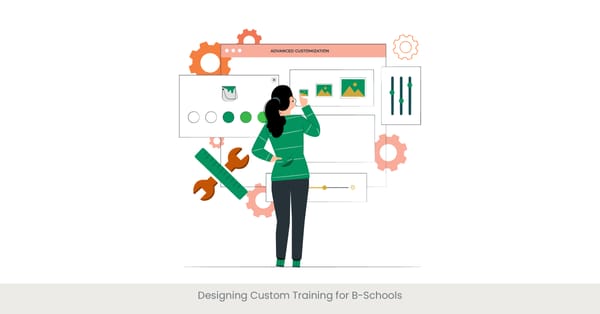
Cultivating Confidence and Charisma in Executive Presenters

Introduction
Confidence and charisma are pivotal traits for any executive presenter aiming to make a significant impact. This sub-topic explores the transformative power of cultivating these qualities to enhance effective communication, and presentation skills, ultimately shaping a compelling executive presence. Confidence not only empowers the speaker but also captivates the audience, fostering a connection that is both influential and enduring.
Background Information
The journey to developing confidence and charisma begins with understanding their psychological underpinnings. Confidence is often rooted in thorough preparation and a profound mastery of presentation skills. Charisma, on the other hand, involves a combination of emotional intelligence, the ability to engage with others authentically, and the use of persuasive body language and vocal modulations. These attributes are not just innate; they can be honed through targeted presentation skills training and continuous practice.
Real-World Applications and Examples
In the corporate sphere, executives like Steve Jobs exemplified how confidence and charisma can elevate a presentation from informative to inspirational. Jobs’s keynote speeches, characterized by his strong stage presence and engaging storytelling, made complex ideas accessible and captivated his audience. Similarly, executive training programs often focus on scenarios that allow leaders to practice and develop these traits, emphasizing role-playing exercises that simulate high-stakes presentations.
References and Validation
Studies have shown that executive presenters who effectively combine confidence with charisma achieve higher engagement and persuasion levels. According to Harvard Business Review, such presenters are perceived as more trustworthy and competent. Further, a 2020 study in the Journal of Leadership Education found that structured training programs significantly improve executives' presentation skills, particularly in high-pressure situations, enhancing both their self-confidence and their ability to connect with diverse audiences.
Projecting Authority and Leadership Through Body Language

Introduction
The ability to communicate effectively project authority and leadership through body language is a crucial aspect of effective executive presentations. This sub-topic delves into how strategic non-verbal cues can communicate confidence and command, enhancing the presenter's perceived authority. Mastering this facet of communication can significantly impact how messages are received and respected by an audience.
Background Information
Body language in leadership encompasses a range of behaviors, from posture and gestures to eye contact and facial expressions. Research indicates that open stances, purposeful gestures, and direct eye contact are integral to conveying authority and leadership. Effective presentation techniques often include training on these non-verbal elements, teaching presenters to use their physical presence to reinforce their spoken words, thereby making their communication more compelling and authoritative.
Real-World Applications and Examples
Consider the impact of a leader like Indra Nooyi, former CEO of PepsiCo, whose authoritative yet approachable body language during presentations helped reinforce her messages and leadership ethos. Training for executives often includes analyzing videos of such leaders to understand how body language complements verbal communication. Additionally, role-playing exercises in executive training workshops allow participants to experiment with and refine their body language, adapting it to different types of audiences and presentation contexts.
References and Validation
Studies highlight the significance of non-verbal communication in leadership, with statistics suggesting that over 50% of a speaker’s credibility can be attributed to body language alone. A pivotal research paper from Stanford University underscores the role of body language in executive success, noting that leaders who effectively use physical gestures and maintain eye contact are more likely to motivate and inspire their teams. Further, feedback mechanisms in presentation skills training emphasize continuous improvement in non-verbal and visual communication, to enhance overall leadership presence.
Enhancing Vocal Delivery and Tone for Impactful Communication

Introduction
The impact of vocal delivery and tone cannot be underestimated in executive presentations. This sub-topic examines how the strategic use of voice can transform presentations, making them more engaging and persuasive. Effective vocal modulation helps in emphasizing and delivering key points and conveying emotions, thereby enhancing the overall communication skills of the presenter.
Background Information
Vocal delivery in presentations involves various elements such as volume, pitch, pace, and tone. Each aspect plays a critical role in how the message is perceived by the audience. For example, a steady pace and lower pitch can project authority and calm, while variations in tone can maintain the audience's attention and emphasize important messages. Presentation skills training often includes vocal exercises that help presenters learn to control and effectively use their voice to suit different presentation contexts.
Real-World Applications and Examples
One notable example of effective vocal delivery is Barack Obama, whose speeches are studied for their cadence, pauses, and emphasis, all of which significantly contribute to his powerful delivery. Executive coaches frequently use clips from his speeches to demonstrate how vocal qualities can enhance the persuasive power of a presentation. Additionally, specialized vocal training workshops for executives focus on breathing techniques and vocal exercises designed to improve projection and clarity, essential for maintaining audience engagement.
References and Validation
Research on vocal effectiveness in presentations shows that speakers who utilize varied intonations are perceived as more dynamic and compelling. A study published in the Journal of Communication found that presenters who effectively modulate their voices are 30% more likely to be considered influential by their audiences. Moreover, training programs that incorporate vocal development exercises report a marked improvement in participants’ ability to convey confidence and authority through their voice.
Building Trust and Rapport with Executive Audiences

Introduction
Building trust and rapport with executive audiences is essential for successful presentations. This sub-topic explores strategies and tips for creating connections with high-level audiences, tips which can significantly enhance the effectiveness of executive communications. Trust and rapport are foundational to engaging effectively and ensuring that the message is not only heard but also valued.
Background Information
The process of building trust and rapport involves several key communication skills, including active listening, empathy, and transparency. For executives, it is crucial to demonstrate a deep understanding of the audience’s needs and concerns and to respond appropriately. Effective communication and presentation skills also involve tailoring messages to resonate with the specific interests own experiences and challenges of the audience, which can foster a stronger connection and a sense of shared goals.
Real-World Applications and Examples
A prime example of this is seen in executive town halls, where leaders like Satya Nadella of Microsoft excel by engaging in open dialogues, addressing employee concerns with empathy, and sharing clear, strategic visions. These interactions are carefully crafted to reinforce trust and rapport, demonstrating an understanding of the audience's perspective and a commitment to addressing their needs. Similarly, executive training often includes simulations that focus on audience analysis, listening skills and feedback interpretation to refine these crucial skills.
References and Validation
Research underscores the importance of rapport in effective executive communication. A study from the Harvard Business Review indicates that executives who actively engage their audiences and show genuine interest in their feedback are 40% more likely to be perceived as trustworthy leaders. Moreover, techniques such as mirroring body language appropriate gestures and using conversational language are taught in advanced presentation skills courses to enhance this connection, as supported by multiple studies linking these methods with higher levels of audience engagement and trust.
Developing Personal Branding and Professional Image

Introduction
In the realm of executive presentations, personal branding and professional image play critical roles in establishing credibility and authority. This sub-topic explores how executives can craft a persona that resonates with their core values, interests, personal story and professional goals, effectively leveraging their personal brand to enhance their presentations and overall executive presence.
Background Information
Personal branding for executives involves a consistent portrayal of one’s strengths, values, and expertise across various platforms. It encompasses not only the physical appearance but also the way one communicates and interacts with others. Professional image is equally important and is often reflected through attire, body language, and digital presence. Presentation skills training frequently addresses these aspects, guiding executives on how to align their personal brand with their company’s culture and the expectations of their target audience.
Real-World Applications and Examples
A notable example of effective personal branding is Sheryl Sandberg, whose professional image and communication style reflect her advocacy for women's leadership and empowerment. Her presentations are often highlighted by her consistent messaging, poised demeanor, and tailored attire, all of which reinforce her personal brand and authority. Executive branding workshops also utilize case studies of successful leaders, providing insights into how these individuals have aligned their public personas with their professional narratives to build trust and influence.
References and Validation
Research indicates that a well-developed personal brand significantly impacts an executive's ability to influence and lead. According to a Forbes study, executives with strong personal brands are 50% more likely to be perceived as top performers. Additionally, training programs that incorporate elements of personal branding and image management report that participants see an increase in their professional visibility and career opportunities, validating the importance of these skills in executive development.
Handling High-Pressure Situations with Poise and Composure

Introduction
The ability to handle high-pressure presenting situations with poise and composure is a hallmark of effective executive leadership. This sub-topic explores techniques and the create mindset shifts necessary for maintaining calm and confident delivery during challenging moments in presentations. Mastering this skill not only enhances an executive's presentation capabilities but also reinforces their overall leadership presence.
Background Information
High-pressure presentation situations can arise from various scenarios, including addressing large audiences, managing critical stakeholder meetings, or responding to tough questions. The key to managing these moments lies in preparation, self-awareness, and stress management techniques. Effective presentation skills training often includes simulations that put executives in high-stakes environments, encouraging them to develop coping strategies such as deep breathing, pausing, and strategic thinking to maintain control and composure.
Real-World Applications and Examples
Executives like Tim Cook of Apple exemplify how to remain composed under pressure, particularly during high-profile product launches and financial disclosures. His methodical speech and deliberate pacing are techniques that help manage the audience’s expectations and his own stress levels. Executive coaching sessions might replicate these high-tension scenarios, offering real-time feedback to help leaders refine their responses and improve their stress resilience.
References and Validation
Studies on executive performance under pressure indicate that those who practice stress-reduction techniques can significantly enhance their communication effectiveness. A survey by the American Management Association reveals that executives who engage in regular mindfulness practices report 35% better management of stressful presentation situations. Furthermore, training programs focusing on emotional intelligence and stress management are shown to improve leaders' abilities to perform confidently and persuasively, even in challenging circumstances.
Balancing Confidence with Humility and Authenticity

Introduction
An executive’s ability to balance confidence with humility and authenticity is crucial for resonating with audiences and building lasting relationships. This sub-topic examines how leaders can effectively combine these qualities to enhance their executive presence and credibility during presentations, ultimately fostering a more inclusive and relatable image.
Background Information
Confidence is essential for clear and assertive communication, while humility helps in acknowledging the contributions of others and learning from feedback. Authenticity brings a genuine connection, making the presenter more relatable and trustworthy. Effective presentation techniques often focus on helping executives find this balance by encouraging self-reflection, recognition of personal and team achievements, and transparent communication.
Real-World Applications and Examples
Executives like Sundar Pichai of Google are admired for their ability to display confidence without arrogance, often crediting team successes in their speeches. This approach not only enhances their personal brand but also strengthens team morale and audience engagement. Training modules for executives may include role-playing exercises that emphasize empathetic listening skills and sharing personal stories, which help in cultivating humility and authenticity alongside a confident demeanor.
References and Validation
Research shows that leaders who exhibit both confidence and humility are perceived as more effective and approachable by their peers and subordinates. According to a study published in the Journal of Leadership & Organizational Studies, such leaders have higher rates of employee engagement and satisfaction. Additionally, presentation skills workshops that incorporate exercises on authentic communication often see a marked improvement in participants’ ability to connect with diverse audiences, further validating the effectiveness of this balanced approach.
Establishing Executive Presence Across Various Platforms

Introduction
In today's digital and globalized environment, establishing executive presence across various platforms is essential for effective leadership. This sub-topic explores the strategies executives can employ to create and project their presence effectively, not just in person but also virtually and across digital media, enhancing their ability to communicate and lead from anywhere.
Background Information
The concept of executive presence on multiple platforms involves consistency in communication style, professional image, and the ability to adapt to different media. Whether it's face-to-face meetings, virtual webinars, or social media interactions, each platform requires a tailored approach to presentation and engagement. Presentation skills training for executives increasingly includes modules on digital communication and virtual presentation tools and techniques to address these diverse requirements.
Real-World Applications and Examples
Leaders like Elon Musk utilize Twitter to enhance their executive presence, directly engaging with the public and stakeholders in a manner that reflects their leadership style. Similarly, virtual town halls have become a staple for executives like Satya Nadella, where his consistent messaging and interactive setup allow for robust audience engagement across the globe. These examples highlight the importance of adapting your writing, speaking and presentation skills to various platforms to maintain and extend executive influence.
References and Validation
Research indicates that executives who effectively manage their presence across multiple platforms can significantly increase their influence and leadership reach. A study from the Center for Creative Leadership highlights that multi-platform presence is linked to higher leadership effectiveness scores, especially in global companies. Moreover, specialized training programs that focus on enhancing digital communication skills report improvements in leaders' ability to engage and inspire teams remotely, underlining the growing importance of versatile presentation excellent communication skills in today's digital age.
Practicing Mindfulness and Presence in Presentations

Introduction
Mindfulness and presence in presentations are critical for maintaining focus and connecting deeply with the audience. This sub-topic explores the benefits of mindfulness practices when presenting and the importance of being fully present, which can significantly enhance the effectiveness of executive communications and strengthen the presenter’s command over the audience.
Background Information
Mindfulness in presentations refers to the presenter’s ability to remain cognizant of their thoughts and emotions, the audience's reactions, and the overall environment during their speech. This heightened awareness can lead to better control over the delivery, timing, and adaptability of the presentation. Presentation skills training often includes mindfulness techniques such as deep breathing, focused attention, and pre-presentation meditations to help executives center themselves and remain present.
Real-World Applications and Examples
High-profile executives like Oprah Winfrey practice mindfulness to ensure their presentations are both powerful and empathetic. By being fully present, they are able to read the room and adjust their delivery for maximum impact. Workshops for executives might incorporate mindfulness exercises, ideas like moment-to-moment awareness drills, which have proven to enhance concentration and reduce the stress associated with public speaking.
References and Validation
Evidence supports the positive impact of mindfulness on presentation skills, with studies indicating that presenters who engage in mindfulness practices experience less anxiety and higher audience engagement. According to a publication in the International Journal of Business Communication, mindfulness training has been shown to improve clarity in communication and the ability to respond more effectively to unexpected questions or challenges during presentations.
Continuously Improving and Refining Executive Presence Skills

Introduction
Continuous improvement is essential for sustaining and enhancing executive presence in the long term. This sub-topic emphasizes the importance of ongoing development and refinement of presentation skills, which are crucial for executives seeking to remain effective and influential leaders in their evolving roles.
Background Information
The journey to mastering executive presence involves regular self-assessment, feedback from peers and mentors, and adapting to new communication technologies and methodologies. This iterative process ensures that executives stay relevant and capable of engaging with diverse and changing audiences. Advanced presentation skills training typically includes techniques for self-evaluation, such as video recording sessions and peer review, to help identify areas for improvement.
Real-World Applications and Examples
Prominent leaders like Jeff Bezos attribute their success in part to their commitment to ongoing learning and skill refinement. By regularly participating in executive training sessions and soliciting feedback, leaders can fine-tune their communication styles and strategies to better align with their organizational goals and audience expectations. Additionally, many corporations now offer digital platforms that provide analytics on presentation effectiveness, enabling more data-driven insights into performance enhancements.
References and Validation
Research underscores the value of continuous skill enhancement in maintaining executive effectiveness. A study from the Wharton School of Business demonstrates that executives who engage in continuous learning and development are 45% more likely to achieve their organizational goals. Moreover, presentation coaching and mentoring programs are shown to significantly boost executives’ confidence and adaptability, further contributing to their overall presence and leadership capabilities.
Frequently Asked Questions (FAQs)
What is communication and presentation skills?
Communication and presentation skills involve the ability to convey information clearly and effectively in front of an audience. These skills encompass both verbal and non-verbal communication, including speech delivery, body language, and the use of visual aids to enhance understanding and engagement.
What are the 5 P's of presentation skills?
The 5 P's of presentation skills are Prepare, Practice, Perform, Pause, and Post-Evaluate. Preparation involves researching and organizing content, Practice includes rehearsing the presentation, Perform means executing the presentation with confidence, Pause refers to taking moments during the presentation to stand still to allow the audience to absorb information, and Post-Evaluate involves reflecting on feedback to improve future presentations.
Why communication and presentation skills are important for students?
Communication and presentation skills are vital for students because they enhance academic performance, facilitate clearer expression own presentation of ideas, build confidence and improve group work dynamics. These skills are also essential for future professional success, as they boost confidence and enable effective participation in discussions and debates.
What is the value of strong communication and presentation skills?
Strong communication and presentation skills increase an individual's ability to influence and persuade others, enhance career prospects, and improve professional relationships. They also foster better understanding and collaboration within teams, making them crucial for leadership and management roles.
What are the 5 P's of an effective presentation?
The 5 P's of an effective presentation are Planning, Preparation, Practice, Presentation, and Post-Presentation. Planning involves setting objectives, Preparation includes crafting the message and visuals, Practice entails rehearsing, Presentation is the actual delivery, and Post-Presentation covers evaluation and follow-up.
What are the 3 major features of effective presentations?
The three major features of effective presentations are clear and organized content, killer presentation, engaging delivery, good communication and appropriate use of visual aids. These elements help keep the audience interested and ensure that the message is communicated effectively.
What are the 7 P's of effective presentation?
The 7 P's of effective presentation include Planning, Preparation, Practice, Performance, Pitch, Pace, and Posture. These elements help in delivering a concise and impactful presentation, maintaining audience engagement, and ensuring message clarity.
What are the 4 C's of a good presentation?
The 4 C's of a good presentation are Clarity, Conciseness, Consistency, and Creativity. Clarity ensures the message is understandable, Conciseness keeps the content direct and to the point, Consistency maintains a steady flow, and Creativity involves using innovative methods to capture and retain audience interest.



%20(1).jpg)
%20(1).jpg)


